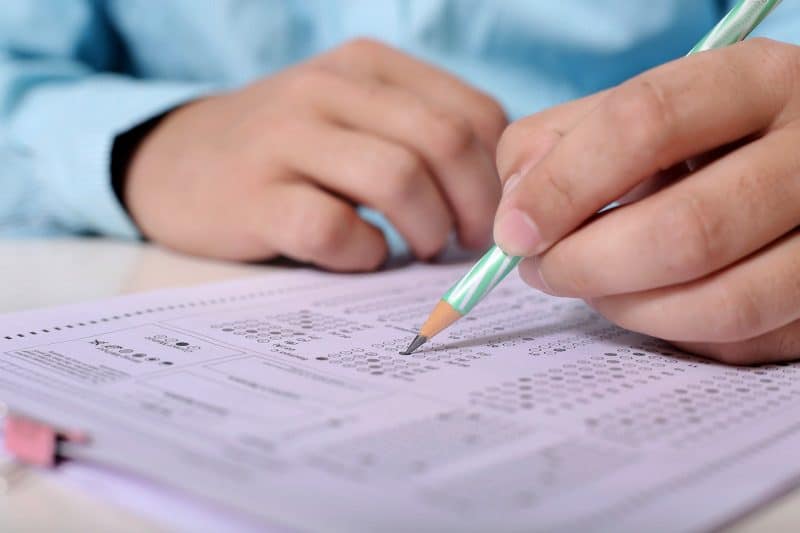Extra Time, Larger Fonts, And Other “Access Arrangements” For Exams That You Should Know About!
Submitted by KiasuEditor

Image by F1 Digitals from Pixabay
Have you heard about “access arrangements,” which support students with special learning needs during examinations?
Recent figures are not publicly available, but in 2017, about 5,000 students — or 4 percent of students sitting for national exams — applied for access arrangements. What exactly are these arrangements, and who is eligible for this support? Read on to find out more, especially if you feel that your child might benefit from such provisions!
Types Of Access Arrangements For National Exams
For parents with children in primary and secondary school, you should receive a school letter about applying for access arrangements a year before the national exams, i.e. during the Primary 5 and Secondary 3 years.
Access provisions and application guidelines are subject to change, and you should refer to your school mailers for the most updated and accurate information.
Access arrangement options include:
1. Extra Time
Your child can apply for additional time to complete exam papers. However, some parents are hesitant to do this, as typical exam durations are already long. You can read KSP’s discussion thread on this here.
There are no extra time provisions for Listening Comprehension exams. For oral exams, all candidates will be allowed to read aloud and speak at their own pace, but for those with special learning needs, they can apply for extra preparation time.
2. Colour Identification Assistance
If your child has colour vision deficiency issues, he or she can apply for colour identification assistance for relevant papers.
3. Question Papers In Non-Standard Print
The following types of non-standard exam paper formats are available to students with special learning needs:
-
-
- Enlarged question papers on A3 sheets (instead of the standard A4 sheets)
- Questions typed in 18-point bold print on A4 sheets, and with simplified visual information
- Question papers in Braille (this is an option for papers in English, as well as Malay)
-
4. Exemption From Exams
Students can apply for an exemption from an exam component, if the weighting of the component is 50 percent or less of the total subject grade. If the weighting of the component is more than 50 percent, an exemption cannot be granted, and the student will be issued an “Absent” grade for the subject.
For exemption from Mother Tongue exams, students will need to seek approval from the Ministry of Education.
Apart from what is listed above, there are other support arrangements such as taking an exam in a separate room, and using a word processor or computer aid. Teachers — as well as child health professionals — will be able to advise you on the full range of available options.
Some parents hesitate to apply for access arrangements, because there will be an annotation on a student’s result slips and certificates, stating the access arrangements that were granted.
A KSP member has given her perspective on this:
“Some parents see that as a blemish [on] the child’s records. I’ve thought hard about this but at the end of the day, my child needed the extra time to help her. And that really made a positive difference.”
Who Can Apply For Access Arrangements?
The first group of students who can apply for access arrangements are those with learning disabilities, such as:
-
- Dyslexia
- Autism spectrum disorder
- Attention deficit hyperactivity disorder (ADHD)
Students with physical disabilities can also apply for access arrangements. This includes students with:
-
- Hearing loss
- Visual impairment
- Physical impairment
The access arrangement application form is available from your child’s school, and it will contain instructions on the supporting documents that you will need to furnish. Applications should be submitted through the school to the Singapore Examinations and Assessment Board (SEAB) for review. (If you would like similar arrangements for school exams, please let your child’s form teacher know.)
One thing that you should be mentally prepared for is the paperwork required for the submission. This includes:
-
- A clear statement of your child’s diagnosis
- Your child’s medical, developmental, and educational history, leading up to the diagnosis
- A description of the tests and techniques used to arrive at the diagnosis
- Where formal standardised assessments have been conducted, evaluation dates and tests scores should be provided
- Observations of your child, by a relevant professional
- A description of your child’s functional limitations in an exam setting
- A description of the access arrangements that your child needs, along with the rationale for each request
A KSP member described her form-filling experience as “super thorough” and “serious business,” comparable to applying for a job position! This is understandable, as the SEAB has to gauge your child’s needs based on the information that you will provide.
If you feel overwhelmed and need assistance with the application process, please do not suffer in silence, or worse, be deterred from efforts that will benefit your child. Instead, make contact with your child’s form teacher, as well as the school’s Allied Educators — these are non-teaching staff in mainstream schools, who help students with mild special needs. Only by making your own needs known, can others step up to support you!